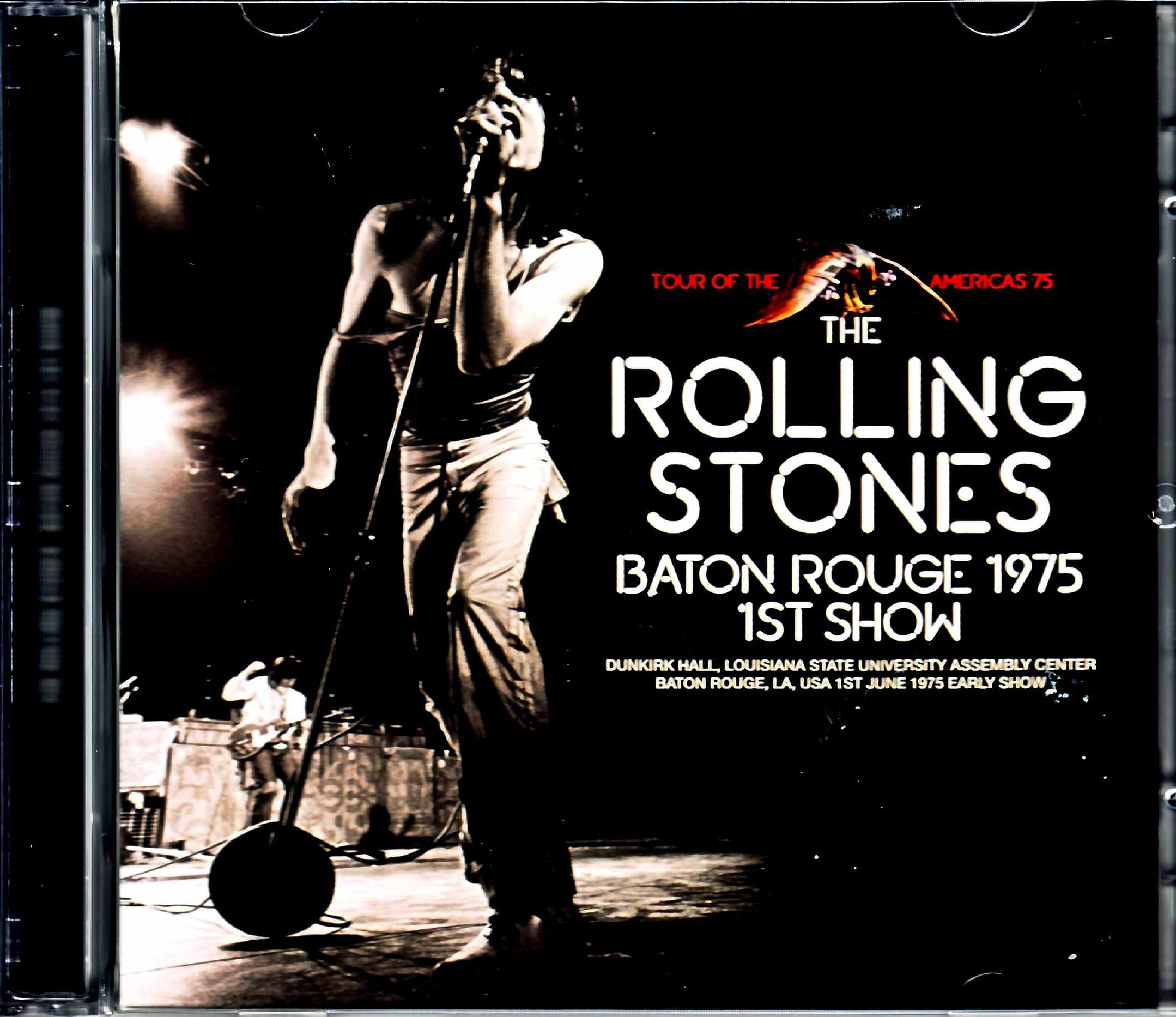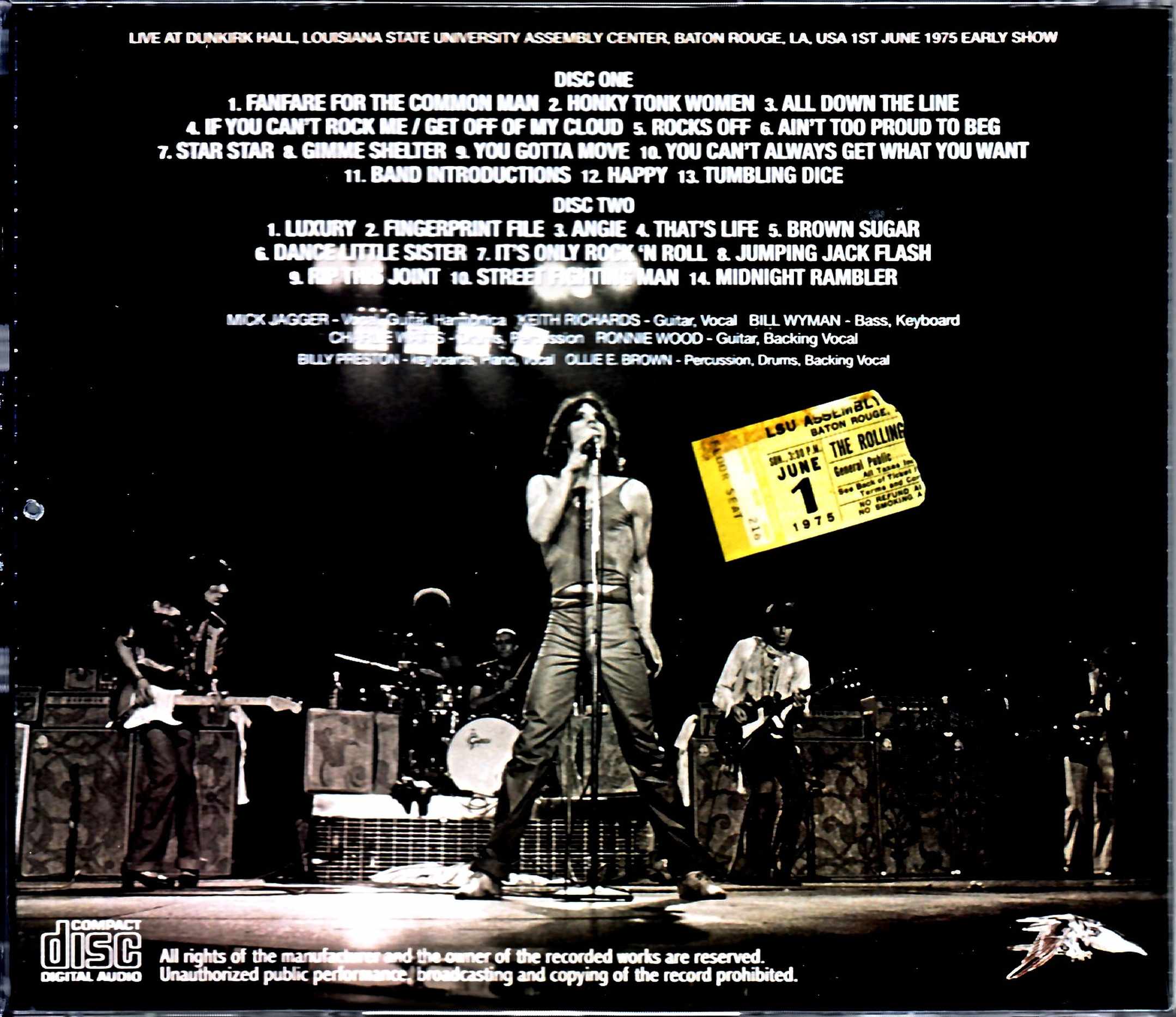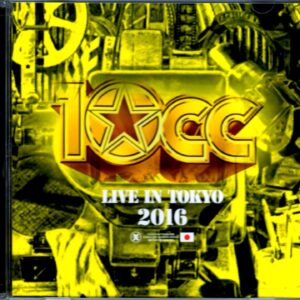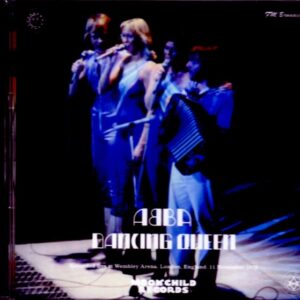Description
The Baton Rouge performance, which was the first day of the Rolling Stones’ 1975 tour, was not only a forced march with two performances a day, but has also become a legendary day among enthusiasts for the intense performance that was already heard on the first day. In particular, the first show was the first stage of the tour, so a large amount of rare repertoire was introduced. These elements have been combined to make it a unique performance in the history of the first day of the Stones’ tour. There are two types of audience recordings that conveyed this legendary first show. “Recorder 1” was used for the real-time release of Contra Band’s “RECORDED LIVE AT BATON ROUGE LOUISIANA JUNE 1 1975” and TAKRL’s “FIRST NIGHT STAND”, and “Recorder 2” was excavated for “CAJUN QUEEN’S AFTERNOON DELIGHT” that appeared in the 1980s. The former was mono and had sound quality typical of a vintage audience, but the latter was a very good audience. Therefore, the first show in Baton Rouge was a performance whose sound source was excavated as an LP item. However, the problem was that the original tapes were not distributed between traders in either case. It was surprising that the tape source of “recorder 2”, which appeared in the 1980s, was not available, although it was “recorder 1” for vintage audiences. This was recorded by the same person who recorded ZEP’s Baton Rouge performance in the same year, and ZEP’s recording was one of the few cases in which the tape source was distributed among traders, which was rare for his recording. In the meantime, the Stones’ tape source of only a few songs, including “Dance Little Sister”, was released in the early 2000s, but there has been no news since then. In such a situation, a maniac who was fed up with the situation realized a careful analog reprint of the masterpiece of the same name “CAJUN QUEEN’S AFTERNOON DELIGHT” in 2007. This was the definitive version, with the volume fluctuation between songs, which was the biggest drawback of the analog, carefully adjusted, the high pitch, and even the order of the songs, which had been changed due to the adjustment of the recording time when allocating it to LP, corrected. Later, DAC label released “SOMEWHERE OVER THE RAINBOW” made with a similar concept, and in the early 1990s, IMP label released the nostalgic title “BATON ROUGE 75” for many enthusiasts who first got a glimpse of the first Baton Rouge stage. All of these past released items were traced from the “CAJUN QUEEN’S~” LP, which resulted in the value of the original LP being maintained. This, combined with the recent momentum of the revival of analog, has caused this LP to reach a price of nearly 20,000 yen in a recent online auction. The label of this title’s unique sense of not using a photo of the Stones on the front jacket backfired, and it was not highly rated in real time, but with these circumstances and the passage of time, it has been promoted to a masterpiece. While enthusiasts were half-giving up on the situation, a tape source from Baton Rouge suddenly appeared on the Internet in recent years. Maniacs around the world were excited to finally find the phantom tape, but when they opened the lid, the volume fluctuation between the songs did not change, and even more unnecessary cuts between songs were added than on the LP, which was a shame. It is still fresh in our memory that the precious sound source was treated as a gift CD-R, but from that state, it is speculated that it was a copy of the master edited for the previous LP. However, this October, a new tape source from Baton Rouge was unearthed on the Internet. This time, it was only released under the name “Low Generation”, and the quality is excellent, easily surpassing not only the “CAJUN QUEEN’S~” LP, but also the version used for the gift CD-R, and of course there are no problems with the volume or cuts that occurred between the MCs. On the contrary, it even surpasses the quality of the LP reprint titles released in the past. The power of the low generation can only be described as expected, and the natural, warm, and wide sound quality makes you feel the true sound quality that could not be conveyed by past items vividly. Rather than being an on-sound image, it was an audience recording with a good sense of distance as its appeal, but the unique feel has been further improved by the discovery of the low generation. What is particularly noteworthy is that you can hear the parts that were not heard or cut on the LP, which is a tape source, and the power of the low generation. The most notable thing is that “You Gotta Move”, which was faded out just before the ending on the LP, was recorded completely until the end of the performance this time. Immediately after that, there was a cut for the tape change, and it is true that the LP faded out to cover up this part. As for the fact that there are other parts that make their first appearance in various places, please see the separate section. It was also revealed that Billy Preston’s “Outa Space” was reused from the second show on the LP, so the song is not included this time (we respected the exceptional low-gene master this time). And it seems that the 1975 tour was a tour that was flying off the line from the first stage of the tour. This was probably the only time that there was no “feeling of groping” that is common on the first day of the usual Stones tour. With Mick at the center, the tension was already flying off the line, and they took an aggressive stance by introducing a large amount of rare repertoire that had been dropped from the set list in a few times. The best example of this was “Dance Little Sister,” but the performance was highly polished. Also, “Rocks Off,” which could be said to be a memento of the Mick Taylor era, was super short-lived, being shown only this time, but this, combined with Mick’s 1975 mode singing style, was also very attractive. Perhaps the past repertoire was cut off first because there were “too many songs”? It is speculated that. The highlight was the wild performance of “Midnight Rambler” as the finale of the live. At this point, the impact of the performance was great, as it included an arrangement to reprise the finale. In this way, the entire live performance was not only a masterpiece that is not unlike the first day of the tour, but also a tape source of an audience recording with a unique ease of listening, and it was excavated in a wonderful condition of “low generation”. The quality is truly amazing, and after all, in 2021, the day will finally come when the “CAJUN QUEEN’S AFTERNOON DELIGHT” LP will be relieved of its duties! Premiered on the North American tour in 1975. The first Stones performance after Ronnie Wood joined (this day was Ron’s birthday) (remaster memo) There is no doubt that it is the original sound tape of the analog boot “CAJUN QUEEN’S AFTERNOON DELIGHT”. The best version of the tape source. The left and right are reversed from the analog version, but this version is the same. The sound quality is quite different from the analog version. This version is better. The pitch of the 1st to 4th tracks is very random, so I fixed it as much as possible. The previously released Outa Space is a take from a late show, so it was not included in this version. Dunkirk Hall, Louisiana State University Assembly Center, Baton Rouge, LA, USA 1st June 1975 Early Show (UPGRADE) Disc 1 (59:24) 1. Fanfare For The Common Man ★Intro is 4 seconds longer 2. Honky Tonk Women 3. All Down The Line 4. If You Can’t Rock Me / Get Off Of My Cloud 5. Rocks Off 6. Ain’t Too Proud To Beg 7. Star Star 8. Gimme Shelter 9. You Gotta Move ★About 50 seconds longer from the end of the performance. It’s great that it’s included until the end of the show. 10. You Can’t Always Get What You Want 11. Band Introductions 12. Happy 13. Tumbling Dice ★About 50 seconds longer from the end of the performance. Disc 2 (62:12) 1. Luxury 2. Fingerprint File 3. Angie 4. That’s Life ★8 seconds longer from the end of the performance 5. Brown Sugar 6. Dance Little Sister ★8 seconds longer before the MC 7. It’s Only Rock’n Roll ★8 seconds longer before the MC 8. Jumping Jack Flash 9. Rip This Joint 10. Street Fighting Man 11. Midnight Rambler ★About 40 seconds longer from the performance of the previous song until the harp comes in. / The ending is about 45 seconds longer.







Reviews
There are no reviews yet.